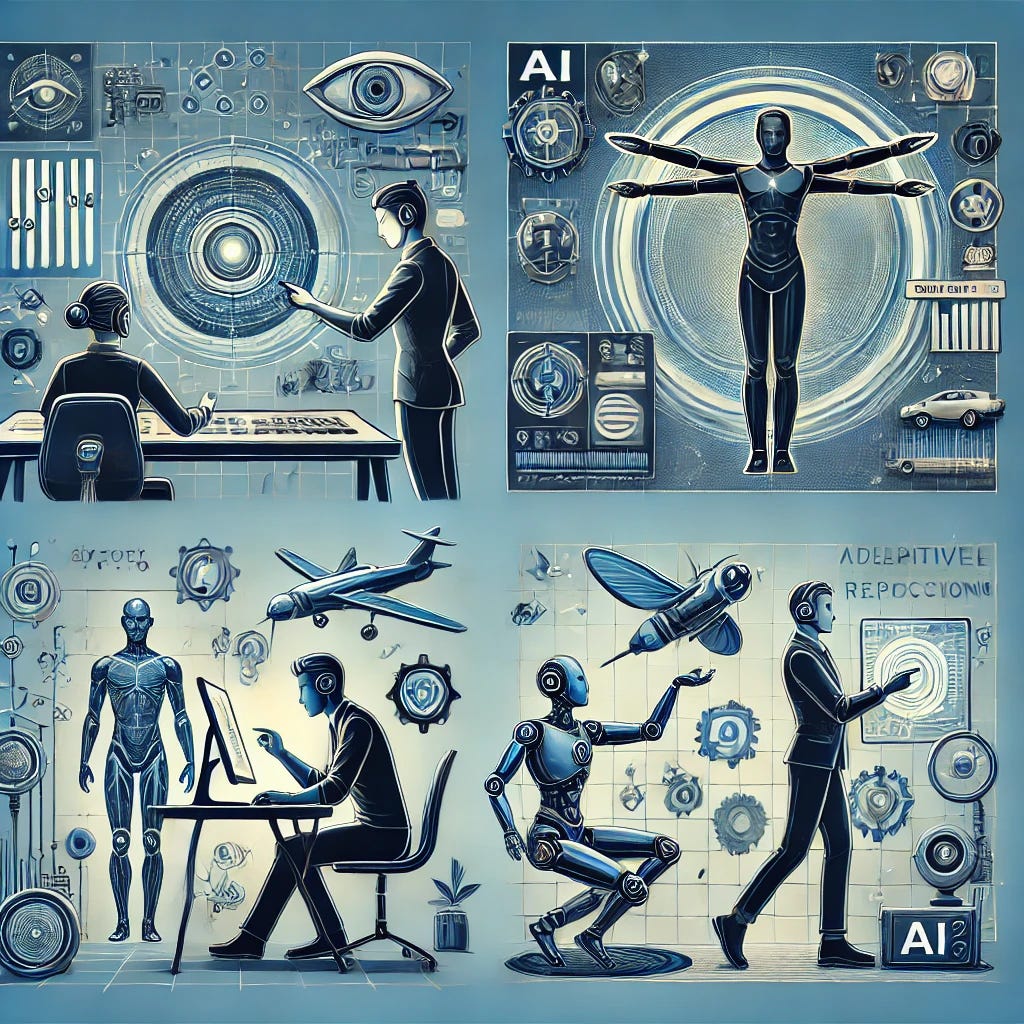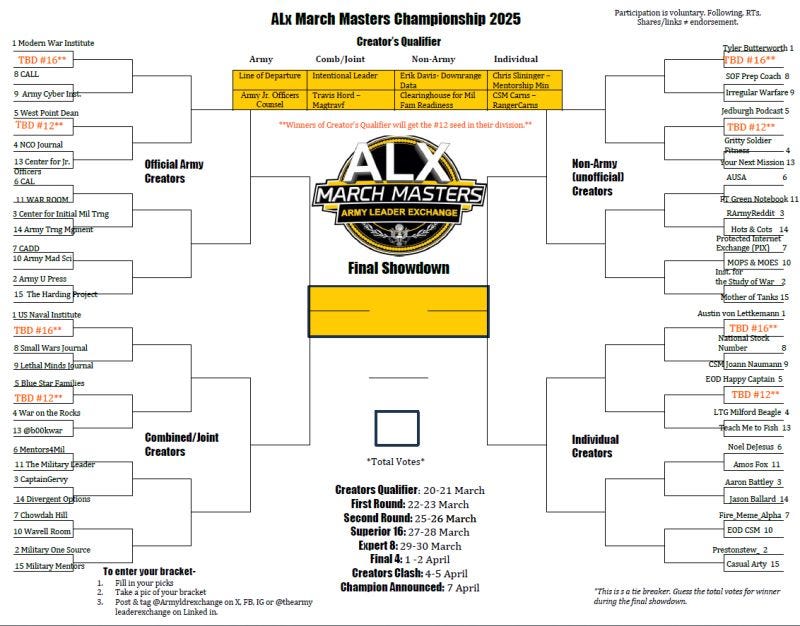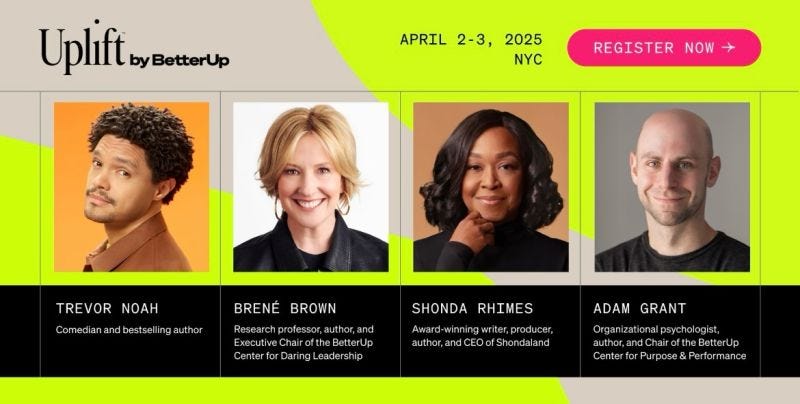Automate or Elevate
A practical framework to help you figure out when AI should augment or eliminate work.
Last week, I had the privilege of joining an incredible conversation at Cornerstone Connect during our session, “The Power of the Pivot.” Alongside Mika Cross, Jason Briefel, Deadra Welcome, and Michelle Clark, we explored what it takes to shift gears in your career—whether by necessity or by choice. We shared stories of transition, reinvention, and resilience, and one message rang clear: flexibility is a force multiplier. When you're willing to pivot, you unlock new opportunities to grow, lead, and align with your zone of genius.
Looking ahead, I’m excited to be in Miami this week (27/28 March) for eMerge Americas, where I’ll be joining Nick Miller, Robert Sladen, and Brian Fonseca for a talent innovation panel focused on how we shape the government workforce amid disruption. We’ll dig into what’s next for public sector talent, and how we reimagine leadership, skills, and systems to meet the future head-on.
And if you're planning to be at Uplift 2025 (2–3 April), don’t miss the exclusive government roundtable that Mika Cross is hosting and I’m honored to be a part of. We’ll be gathering thought leaders to discuss what's working, what’s not, and how we build a more human-centered workforce strategy. Scroll down for a special deal just for federal employees!
Now, on to this week’s deep dive: Gay Hendricks’s Zone of Genius. How do you know what to automate versus what to elevate in your role or team? We’ll explore the pyramid—and how it can help you make smarter decisions about where to invest your time, talent, and technology.
Let’s decode it. 🚀
Eliminate, Automate, Co-Pilot, or Elevate
As artificial intelligence becomes a more integral part of how we work, the question is no longer “Should we use AI?” but “Where and how should we use it?” The answer lies in knowing what to automate, what to eliminate, where you need a co-pilot, and what to elevate—and to make those decisions, we can look to a deceptively simple but powerful framework: Gay Hendricks’s Zone of Genius framework.
Graphic: Anaik Alcasas (Medium.com)
You may know this model already. Hendricks introduced the idea that we all operate across four zones of capability:
🟥 Zone of Incompetence – You’re not good at it, and others can do it better.
🟨 Zone of Competence – You can do it, but it’s not special or unique to you.
🟦 Zone of Excellence – You’re good at it, and others recognize it, but it may not energize you.
🟩 Zone of Genius – Work that is uniquely yours to do, where your natural talent and deep passion intersect.
While originally intended as a framework for personal development and career alignment, this framework is just as useful when applied to AI-human teaming. Let’s walk through how it helps us make smarter, more human-centered decisions about where AI belongs—and where humans should lead.
Zone of Incompetence: Eliminate Tasks
The bottom of the pyramid is work we’re not good at—and, let’s be honest, don’t need to be. In an organizational setting, this could include:
Manual data entry
Recurring spreadsheet formulas
Scheduling meetings across time zones
Repetitive administrative workflows
Forms. Sigh…forms. I hate forms. I always sign them in the wrong spot.
These tasks are not only draining when done by humans, but also prone to errors and inefficiency. The thing is, they’re perfect candidates to eliminate work, because a lot of times, you just don’t need to do them. There’s a tool that already does that for you in the case of scheduling and repetitive workflows, or in the case of manual data entry, you can completely eliminate it as long as you can get data by scanning a document or plugging into an authoritative system via API.
Use AI here to eliminate waste and reduce risk. If humans aren’t good at it, and the work itself isn’t adding strategic value, it’s a perfect place for machines to step in. In leadership terms, this is where we stop asking people to "slog through" tasks that don’t match their skill sets, and instead ask:
“What systems or tools can do this better?”
Zone of Competence: Automate with Oversight
The Zone of Competence is tricky. You can do these tasks just fine—but so can others, including AI. These are tasks like:
Reviewing resumes for keywords
Writing status updates
Generating basic reports
Drafting standard emails or templates
Assigning strength metrics to board files
These are all repeatable, rules-based tasks that AI can do quite well—often faster, and at scale. But because they may still require a layer of human context or judgment, we shouldn’t eliminate them entirely. Instead, we should use AI to automate and then do quality checks with humans. We let the machine take the first pass, while humans guide and review the output.
Think of it as "automate 80%, human-check 20%".
AI works best in your Zone of Competence when it’s trained on your workflows and paired with human judgment. That way, it becomes a force multiplier—taking things off your plate without taking the reins completely.
Zone of Excellence: Augment and Co-Pilot
Here’s where it gets interesting.
The Zone of Excellence includes the work you’re good at—your current sweet spot. People depend on you for it. You're often rewarded for it. But here’s the catch: it may not light you up. And it may not be the highest value you could offer.
Examples might include:
Analyzing performance trends
Leading recurring meetings
Managing complex spreadsheets
Writing informative papers and reports
Building presentations or proposals
AI can be your ally here by helping you scale your skills or cut down the time it takes to do these tasks. You’re still involved, but not in a grinding, repetitive way. The goal here is to elevate your work to its most impactful version, using AI to:
Generate the first draft of insights or reports
Summarize data visualizations
Prepare talking points or frameworks
Offer performance trends from real-time analytics
AI in the Zone of Excellence helps you go faster and think bigger, allowing you to shift from doing the work to leading and guiding others through it.
Zone of Genius: Human in the Lead
Your Zone of Genius is where AI should never be the lead—at least not yet. This is where your unique insights, creativity, intuition, and leadership come into play. These are things only you can do:
Building trust
Coaching and mentoring
Creating strategy from ambiguity
Inspiring and influencing others
Seeing patterns others miss
Leading culture and change
AI can’t replicate this kind of deep human connection and vision. But it can support it. Maybe it suggests strategic talking points, uses assessment data to suggest best practices for coaching, communicating, and influencing, pulls background research, or visualizes trends you hadn’t yet noticed.
But the decision? The insight? The breakthrough? That’s still yours.
In your Zone of Genius, AI doesn’t replace you—it elevates you.
This is where you should spend the majority of your time if you're in a leadership role. AI should buy you back the time and clarity to focus here.
Building a Smarter Workflow
So what does this mean in practice?
Ask these questions as you think about tasks and workflows:
Am I uniquely good at this—or is it just something I do well?
Does this task energize me—or just fill my calendar?
Is this something AI could automate—or augment?
Is this work moving me toward my Zone of Genius—or away from it?
You can even map out team roles and functions using this pyramid to determine where to apply:
🟥 Elimination (Zone of Incompetence/Competence)
🟨 Automation (Zone of Competence/Excellence)
🟦 Co-pilot (Zone of Excellence)
🟩 Human leadership (Zone of Genius)
Use AI to Clear the Path to Your Genius
The power of Gay Hendricks’s pyramid isn’t just personal—it’s strategic. When you use it to evaluate how your team spends their time, you start to see where talent is under-leveraged, misaligned, or stuck in work AI could easily do.
The promise of AI isn’t to replace human talent - it’s to evolve work. This isn’t the first time this has happened. Look at the evolution of work that happened in the Industrial Revolution, or just since computers were introduced into the office (let’s forget the email for now, but still). It has changed the nature of our work. Work doesn’t go away, but we work differently, and we focus on much more complex things than we ever did before.
The goal is to help every individual and every team spend more time in your Zone of Genius, solving problems, leading people, and creating the things that only humans can. It’s not a perfect system (see “email” above). Sometimes we create new problems in workflows. But it’s ever evolving and changing, and you don’t want to be stuck solving yesterday’s problems when you have new problems to tackle.
So the next time you’re staring down a list of tasks, don’t just ask “Can I do this?”
Ask: “Should I be doing this—or is this a job for AI?”
Let’s automate the rest—and elevate the best. 🚀
Talent Trends & Insights
Here’s what I’m paying attention to this week - or yeah, my 5 things.
1. Pentagon Content Removal and Restoration.
The Pentagon has come under scrutiny for removing online content celebrating military achievements by women and minorities, aiming to eliminate specific content according to Executive Orders. This purge led to the deletion of significant historical references, including pages about Jackie Robinson, the Tuskegee Airmen, and the Navajo Code Talkers. Officials are now working to restore erroneously deleted content, acknowledging that many posts may be lost permanently.
Guys…seriously. There are plenty of ML and NLP techniques that make it really easy for the machine to read words in proper context. Whether this was just sloppy or actively meant to provoke, it’s just one more stressor we don’t need right now.
2. Neurodiversity and the Workplace.
A growing awareness is emerging about the exclusionary nature of traditional workplace activities that adhere to "neurotypical norms," like networking events and small talk, which may overlook the potential of neurodiverse individuals.
With notable neurodiverse leaders such as Richard Branson and Bill Gates, only 31% of neurodivergent individuals in the UK are employed despite their capabilities in areas like pattern recognition, creativity, and detailed focus. Studies suggest including neurodivergent professionals can increase productivity by 30%, and doubling autism employment can boost the economy by £1.5 billion. This highlights the need for businesses to adopt neuroinclusive practices, which benefit the entire organization. Initiatives by companies such as SAP, Microsoft, and Hewlett Packard Enterprise are already proving advantageous.
3. Defense Civilian Workforce Reduction.
The Pentagon plans to cut approximately 50,000 to 60,000 civilian jobs, aiming for a 5% to 8% reduction in its workforce. About 21,000 employees have taken voluntary resignations, with the remaining reductions expected through attrition and unfilled vacancies.
Not a single one of us are going to argue that we can’t be more efficient. However, using firings, resignations, and hiring freezes doesn’t result in efficiency—instead, it goes back to one-size-fits-all talent management and assumes civilian employees are either interchangeable cogs all doing roughly the same functions, or that the jobs not being filled or people departing are equally distributed across functions. Worse, it assumes that the people resigning are non-performers, when in fact the opposite is often the case. We’re going to have our work cut out for us and some significant strategic workforce planning to do to repair the force after all this.
4. Human Skills in AI-driven Management.
It’s good to be a deep expert at your job, but that may not be what gets you into leadership. According to the EVP of talent growth and development at Salesforce, Lori Castillo Martinez, two very human skills are needed for leadership: collaboration and task management.
The best managers are those who know how to look at the work that needs to be done and understand what needs to be done by humans and where AI agents can maximize a team’s capability. They also know how to quickly identify and assess the skillsets of others. As we discussed earlier in this newsletter, AI can help with this, but there’s a certain measure of human intuition and experience that plays a critical role here.
5. Military Content Creator March Madness.
This one’s just for fun. But check it out—the Army Leader Exchange is encouraging a great contest to bring more visibility to the great voices we have around the Army. I missed the deadline to submit my bracket formally, but I have my picks and I’m watching to see who makes the cut!
I promised you a special treat…
Team…just look at this lineup of speakers at Uplift 2025.
I mean, I know you want to see me and Mika 😁 but check this out. Come to this event in Manhattan and hear from some absolutely incredible thought leaders on what it takes to elevate human performance and keep up with the changing nature of work and the work environment!
You can register here: Uplift 2025 | Home
But if you’re in the federal government, you can join us for **FREE** and join us at our government networking reception on 1 April, prior to the event. No April Fools here, you can come join us for FREE thanks to the amazing folks at BetterUp.
Use Code GOVUPLIFT to join us!
Final Thought: Finding your own efficiency
As AI becomes more embedded in our workflows, the real opportunity isn’t just in automation—it’s in amplification. When we use frameworks like the Zone of Genius to guide where we spend our time and how we integrate AI, we shift from just working efficiently to working meaningfully. Let AI clear the noise so you can focus on what only you can do.







